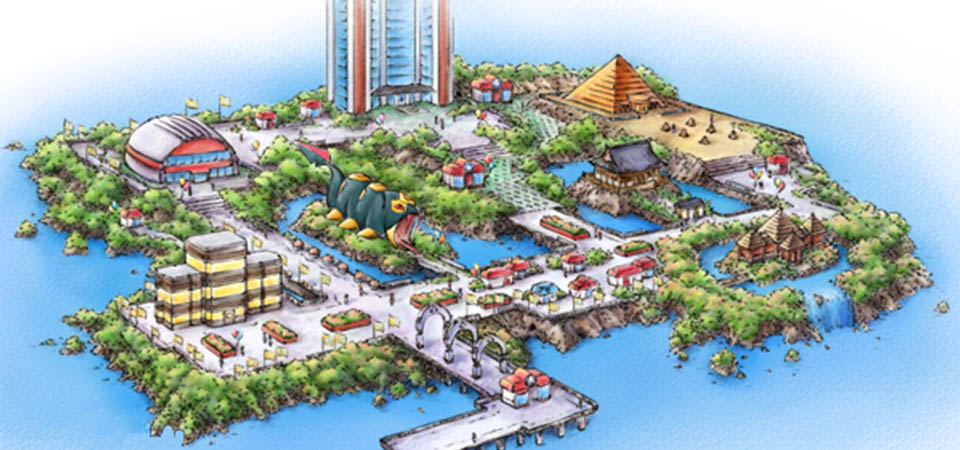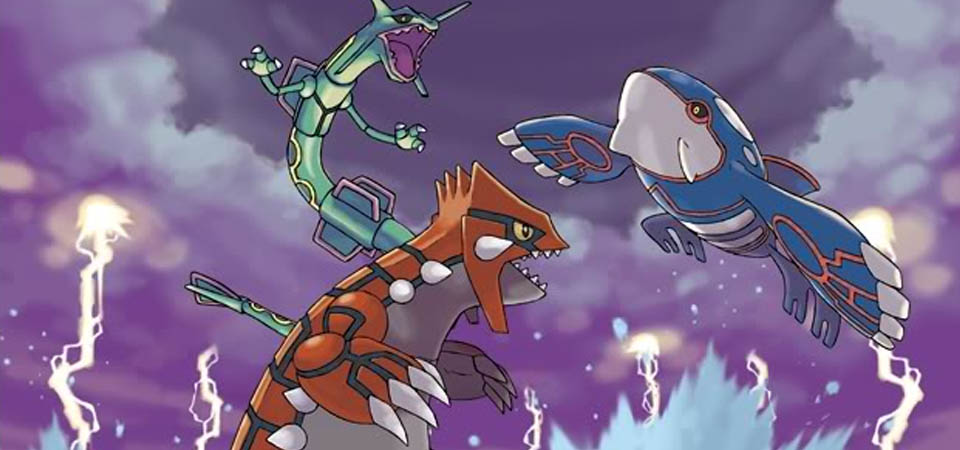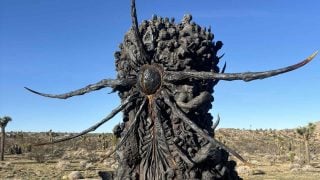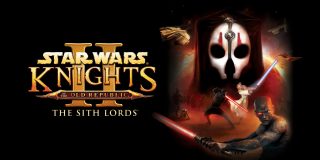Can it be? Just five days left until Pokémon Sword and Shield hit store shelves? It’s true! The next mainline installments in the Pokémon series are almost upon us, and we’re so close to getting to experience a brand-new set of Pokémon, the fresh, new Galar region, and any other surprises Nintendo has in store. It’s no secret that Sword and Shield are controversial among long-running members of the Pokémon fandom, but we know there are players still very excited for these games. To celebrate Sword and Shield’s launch, I (and the rest of the Nintendo Wire team) wanted to lead up to them by looking back at each generation of Pokémon games: their strengths, their weaknesses, what they brought to the series, and even what they took away.
Yesterday, we looked back at Pokémon Generation II, and on Friday, we did Generation I. Let’s continue on with Day Three of our countdown by looking back at Generation III: Pokémon Ruby, Sapphire, Emerald, FireRed, and LeafGreen Versions… and my personal favorite generation of all time.
Take courage, and leap into the world of Pokémon where dreams, adventure and friendships await!
I was in fifth grade when Pokémon Ruby and Sapphire Versions were on the cusp of releasing. By this time, I had a handful of friends who were fans of the games, but one boy in particular was just as excited as I was. He’d purchased a guide book ahead of the games’ launch and at recess, we’d stand around the basketball court looking through the loads of new Pokémon that were set to debut in the upcoming titles. It was there that I first met Flygon, that beautiful, beautiful Ground/Dragon Pokémon who’d forever become my favorite Pokémon of all time.
I was already pretty ingrained in all the online hot spots for Pokémon news — including Serebii.net — so this was the very first Pokémon game with a development cycle I was able to follow online. I remember seeing pictures of Duskull, Kecleon, and Wynaut’s sprites and being blown away by the new designs and enhanced graphics — both in terms of the Pokémon and the region. They were all such a step up over Gold, Silver, and Crystal Versions, and I was in desperate need of some good Game Boy Advance games. After all, at the time I think all I had was Mario Kart: Super Circuit and Jimmy Neutron: Boy Genius, so my options were… y’know, hit-or-miss.

I don’t know at what point I realized that Generation III was my favorite, but after I got my hands on Pokémon Ruby, I’d fallen head-over-heels with everything about it: its music was delightful, the new Pokémon were great (my choice at the time was Torchic, but I’ve become a Treecko man in the years after), and the region, Hoenn, was spectacular. Hoenn’s many towns, landmarks, oceans, and routes were nothing like I’d ever seen before in a Pokémon game. It was all so exotic, from Fortree City to Sootopolis, from the Trick House to Fallarbor Town. The soundtrack, the characters, everything that made Pokémon Ruby and Sapphire so different from everything that’d come before it is what made them shine.
I realize putting Gen III at the top of my list is a controversial opinion. Many don’t like Gen III due to its Pokémon designs, or the fact that a lot of Gen I and II Pokémon were locked behind post-game transfers (and mostly unobtainable unless you had a console game like Pokémon Colosseum and XD: Gale of Darkness). None of this fazed me, though: Everything felt fresh. It felt new. Team Magma and Aqua were such a step-up from the relatively small-potatoes threat of Gen I and II’s Team Rocket. Their world-ending schemes felt so enormous to ten-year-old me. The Legendaries, Groudon, Kyogre, Rayquaza, Deoxys, Jirachi, the trio of Regis, Latias and Latios… they were the largest set we’d had yet, and they were all so cool: Powerful monsters that controlled the weather, an alien from outer space, a wish-granting fairy.
All the themes in the game were so memorable, too, from the route tracks to the music in each town. Both the rival theme battle and the Gym Leader Theme remain some of my favorite in the entire series. There’s just something so energetic about this track and I’ve enjoyed every rendition of it, from the original to the re-arrangements for Black 2 and White 2 and Omega Ruby and Alpha Sapphire:
I didn’t finish Ruby the first time I owned it. I got stuck at the Elite Four because I didn’t diversify my team’s move set enough, so I took a break and returned to the game with Pokémon Emerald, the enhanced third version. My team there was Blaziken, Flygon (<3), Shiftry (the one dumbly named “Dots” that you get in an in-game trade as a Seedot), Mightyena, Golduck, and Manectric. After I beat Emerald, I returned to Ruby and restarted, finally beating the game with a team of Sceptile, Crawdaunt, Salamence, Crobat, Aggron, and Arcanine. Oh, and my Emerald Mightyena was even my first-ever Shiny Pokémon: caught as a Poochyena, which I raised into its beautiful adult form with blue eyes and a golden coat.

To that point, Emerald Version was the very greatest the Pokémon series’ enhanced third versions had to offer. It took everything great from both Ruby and Sapphire, combined it, and added a ton of original stuff, as well. Both Team Magma and Aqua were the baddies, making the story feel significantly more cohesive. The Battle Frontier was added, introducing the most substantial post-game we’d see in years. I only wish Omega Ruby and Alpha Sapphire had remade Emerald instead of the paired versions, like HeartGold and SoulSilver did with Crystal Version, because Emerald is truly the best way to experience Gen III. I have half a mind to buy another Emerald cartridge just so I can experience the game all over again.
While Omega Ruby and Alpha Sapphire are Gen VI games, I feel I must mention them here given my love for Gen III. They were good games, but disappointing remakes. I feel like Game Freak truly put their heart and soul in Pokémon HeartGold and SoulSilver, and that just wasn’t true of ORAS. There was no “GBA Sounds” item like HGSS’s “GB Sounds,” which allowed players to listen to the original soundtracks. They cut the Battle Tower and Frontier, only to replace it with a replica of Pokémon X and Y’s Battle Maison (and to rub salt in the wound, they featured a “model” of the Frontier, as well, with a “Coming soon!” sign). They even got the title theme wrong, neglecting to include many of the musical flourishes that made the original piece so interesting.
It was definitely a bummer for me when I finally played ORAS, but those games can’t take away what made Ruby, Sapphire, and Emerald so special for me. Maybe one day we’ll see another go-again at a remake of Gen III… hopefully at a time when Game Freak isn’t so crunched to make annual game releases that they neglect to make it the best they possibly can.
So you’re going to the Pokémon League? You collected all the Badges too? That’s cool! Then I’ll whip you as a warm-up for the Pokémon League! Come on!
Oh, that’s right: Another two games were made as part of Generation III — the very first remakes the Pokémon series ever saw. Pokémon FireRed and LeafGreen, retold, enhanced, and Game Boy Advance versions of the original Gen I games. I asked for Pokémon FireRed as a gift and was mistakenly given Pokémon Mystery Dungeon: Red Rescue Team (which I guess I should’ve kept, since it’s a great game in its own right). There’s not a ton here to say about FRLG except they were phenomenal, doing everything Gen I did right and adding even more. Although the Pokémon: Let’s Go weren’t awful by any means, Pokémon FireRed and LeafGreen Versions are my preferred way to experience the story of original Pokémon Red, Blue, and Yellow.
I mostly played FireRed on the big screen, using the Game Boy Player add-on to my GameCube. My team was Charizard, Pidgeot, Golduck, Nidoking, Jolteon, and Dragonite, and I beat FireRed far quicker than I ever did the original games. Every facet had been improved — the graphics were in full color, mechanics that Gen III introduced like Natures and Abilities were all here, and the music was top-notch. I still get goosebumps hearing the original Trainer battle theme remade in the GBA’s glorious sound font.
I’m going to win! For the Pokémon who gave me courage and strength! Okay… Here I come!
Of all generations, it’s hard to argue that Generation III didn’t bring the most to the Pokémon series. Generation III completely overhauled Pokémon’s data structure, giving each monster an individual personality value that determines traits like gender, Nature, Ability, and more. Speaking of Natures and Abilities, these were added to the games for the first time in Pokémon Ruby and Sapphire, adding entirely new dimensions to competitive Pokémon battles. Berries, which were fairly basic in Generation II, were revamped in Gen III and given the ability to be grown individually as plants to be picked and planted elsewhere.
135 new Pokémon were introduced — the most added at the time since the original 151 in Generation I — as well as 103 new moves. The Pokémon Storage System was also totally overhauled, ridding itself of the old text-based UI in favor of a full-color, graphical one. Pokémon Contests, which have been absent from most games following their introduction, also made their debut in Gen III, in addition to start-of-battle weather effects (plus a new one: hail), double battles, and much more.

But just as easily as Pokémon Ruby and Sapphire added things to the franchise, it also took some away. Day-and-night cycles were abandoned, as were Apricorn Poké Balls and the animated sprites introduced in Pokémon Crystal Version. However, the latter was reintroduced in Pokémon Emerald Version, plus a few new features, as well: multi battles and the massive Battle Frontier, whose return has been begged for by competitive players for years. The Battle Frontier expanded greatly on the concept of the Battle Tower, with new facilities with new rules, all of which were headed by powerful “Frontier Brains.”
FireRed and LeafGreen, meanwhile, added the ability to wirelessly trade and battle between games (requiring an adapter boxed with the games), the ability to move multiple Pokémon in the PC at once, items represented by sprites, and the Sevii Islands: a group of nine islands not present in the original Gen I games that allowed players to catch Pokémon normally found only in Johto. The very existence of Pokémon FireRed and LeafGreen, which let players catch both Kanto and Johto-native creatures, resolved an issue many had with Pokémon Ruby, Sapphire, and Emerald: the fact that many classic Pokémon were unavailable without transferring from console games.
Pokémon Ruby, Sapphire, and Emerald also had some interesting qualities: They’re the only Pokémon games to feature both a mother and father for the player character, the first in which the player cannot name their rival (it’s always either Brendan or May, depending on the gender the player chose), and the first games in which the iconic Pokémon slogan “Gotta catch ’em all!” isn’t on the box art.
You’re young. Your inability to understand our noble cause can’t be helped… But, if you were to impede us ever again, you’ll see no mercy from us!
Apart from the story on the Sevii Islands (which featured a nice, little tie-in to Pokémon Gold, Silver, and Crystal Versions in the form of a subtle mention of Giovanni’s “kid,” Silver), Pokémon FireRed and LeafGreen had the same story as the games on which they were based, so I don’t feel compelled to discuss them. Ruby, Sapphire, and Emerald, on the other hand, had a completely new one, on a scale unlike anything in Gen I or II.
The player begins their adventure in Hoenn’s Littleroot Town, having moved from Johto with their mom and dad after their father, Norman, received a job of the Petalburg City Gym. After saving Professor Birch from an angry Pokémon in the field, Birch gives the player one of three Starter Pokémon: Treecko, Torchic, or Mudkip. Following this and an introduction to Birch’s son or daughter Brendan or May, the player embarks on a journey across the region to challenge its Gyms and Pokémon League. Along the way, they run into Team Magma and Team Aqua, organizations involved in some pretty intense, world-ending schemes. Team Magma wishes to expand the world’s land mass to create new habitats for land-based Pokémon while Team Aqua wants to expand the oceans to serve water-based ones. Both teams are at odds with each other, with the player teaming up with Team Aqua in Pokémon Ruby and Magma in Sapphire. In Emerald, meanwhile, the player faces off against both teams.

The player also meets a sick, young boy named Wally, whom they befriend, as well as the Hoenn Pokémon League Champion, Steven Stone, whom they partner up with on various occasions to fight Team Magma/Aqua. Near the game’s end, Team Magma/Aqua achieve their goal in awakening the ancient Pokémon Groudon/Kyogre, but the player puts an end to their apocalyptic plans and their organizations entirely. They head to Ever Grande City to fight the Elite Four and conquer them and Steven to become Champion.
As I said before, Gen III took the stakes of previous Pokémon games’ stories and amped them up to 11. Team Magma and Aqua aren’t simply criminals: they’re eco-terrorists whose plans don’t just amount to enriching themselves. These guys are gonna end the entire frigging world! As a child, this was terrifying to me, and probably one of the reasons Pokémon RSE stayed with me for so long. RSE continued the practice of including Pokémon League characters, like the Champion, in the story while also introducing a second rival for the very first time: Wally. Wally didn’t make much of an impression on me the first time I played Ruby; I honestly thought he was a bit annoying at the time, but as I grew older, I began to appreciate his growth. You meet this fragile, sickly kid early in the game and get to watch him develop into a strong, ambitious trainer who wants to take on the Pokémon League — all thanks to the impression we, the player, have left on him. It was one of the most mature, and touching, things the Pokémon games had tried at that point, and I was glad to see Wally get some even more time in the spotlight in Omega Ruby and Alpha Sapphire.
Hoenn’s setting was also incredibly beautiful and diverse, with settings that just weren’t feasible on the limited technology of generations past. Beaches, an active volcano, a hollowed-out volcano host to an entire city, vast oceans (sorry, IGN), a city built atop a forest, a town covered in volcanic ash, a village that floated on the sea waves… It was all so dazzling. Sinnoh, Unova, Kalos, Alola, and, from what we’ve seen so far, Galar look interesting in their own right, but you just can’t beat how much environmental variety that was packed into the Hoenn islands. Fight me.
The Pokémon were also hands-down the coolest we’d ever gotten. Flygon aside, who’s just the most perfect thing to ever exist, we also got Sceptile, Ludicolo, Shedinja, Breloom, Masquerain, Wailord, Milotic, Sharpedo, Dusclops, Roselia, Tropius, Banette, Aggron, Castform (a Pokémon that can change the weather!), Gardevoir, Salamence, Metagross, Rayquaza, Deoxys, Jirachi… there’re just so many cool Pokémon to list!
“Hello” is the beginning of “good-bye.” I hope we meet again.
Generation III today remains pretty contentious among Pokémon fans, with some even considering Ruby, Sapphire, and Emerald their least-favorite games. I am not one of those people, and I maintain that Generation III, along with IV and V, are what I’d consider peak Pokémon. This is where things get really good and stay really good… up until we hit Gen VI and things start slouching a little. I cannot express how much I love Hoenn and everything in these games, and for any gamer curious about Pokémon, I cannot recommend you pick up a GBA and buy yourself a copy of Pokémon Emerald Version enough. In fact, I’m gonna do that right now. Maybe I’ll buy three. Or ten. Or however many carts I need to be able to play a full game of Emerald every year for the rest of my life.
…
Flygon’s the best Pokémon. Okay, I’m done.
What’re your thoughts on Pokémon Generation III? Let us know in the comments and be sure to catch us tomorrow for our retrospective on Generation IV!
Leave a Comment

